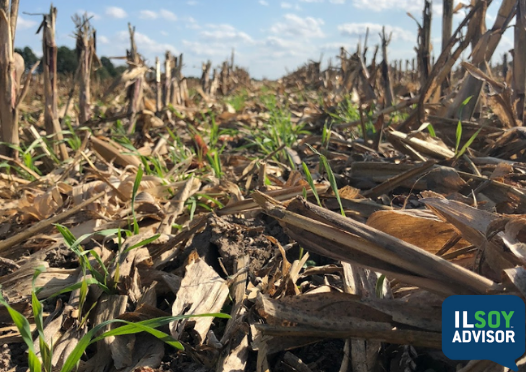ILSOYADVISOR POST
Preparing to be a Cover Cropper
Planting cover crops is the rage but don’t go into it without a little preparation.
Attend most any meeting this winter and one of the topics will include the use of cover crops. There is unprecedented interest in growing cover crops from a variety of promoters including government agencies, seed companies, aerial applicators—even equipment manufacturers want to talk to you about growing cover crops. Don’t farm naked!
Amid all the chatter, there are several valid reasons to explore using cover crops: protection from soil erosion, improving soil health—a current catchphrase in the industry referring to the quality of the microscopic plants, animals, fungi, bacteria and so forth within the soil—remediating soil compaction, as well as nutrient sequestration and reduction of nutrient loss through tile outlets. These are all positive benefits that can be expected when successfully establishing and growing a cover crop, or a mixture of cover crops.
Even with the above list of features and benefits, it should still be stated that including cover crops in your soybean crop rotation should be initiated with the same kind of planning that goes into your soybean crop. It is very important to detail your expectations, costs, timing and resources before jumping into cover cropping. Do not plan on success if you wait until the first week of September and then decide to plant a cover crop for the first time.
The first thing to consider when contemplating cover crops for your operation needs to be the expected outcome. This will impact many aspects of the system, from species or mixture selection, timing of establishment—even where to use the practice within the rotation. Knowing what your goals are is always a great place to begin.
After you have decided what you are trying to accomplish, choose a single plant or mixture of plants that will accomplish that goal. It may be as simple as drilling cereal rye following corn harvest, or it may be as complicated as a “cocktail” of seeds including annual ryegrass, a legume like clover or winter pea, and a brassica like radish or turnip, using aerial seeding. Your seed supplier has guidelines on what species will accomplish your goals. You should also talk to other growers who have grown cover crops. Don’t make the same mistakes they made in getting started.
After you establish which crop(s) will accomplish your expected results, then you can move forward to investigating things like finding a source of seed, a method of sowing the seed, how and when to terminate the cover crop and so forth.
By thoroughly preparing for the use of cover crops in your operation, you can be more assured of success and reaching the outcomes you are seeking.





Comments
Add new comment